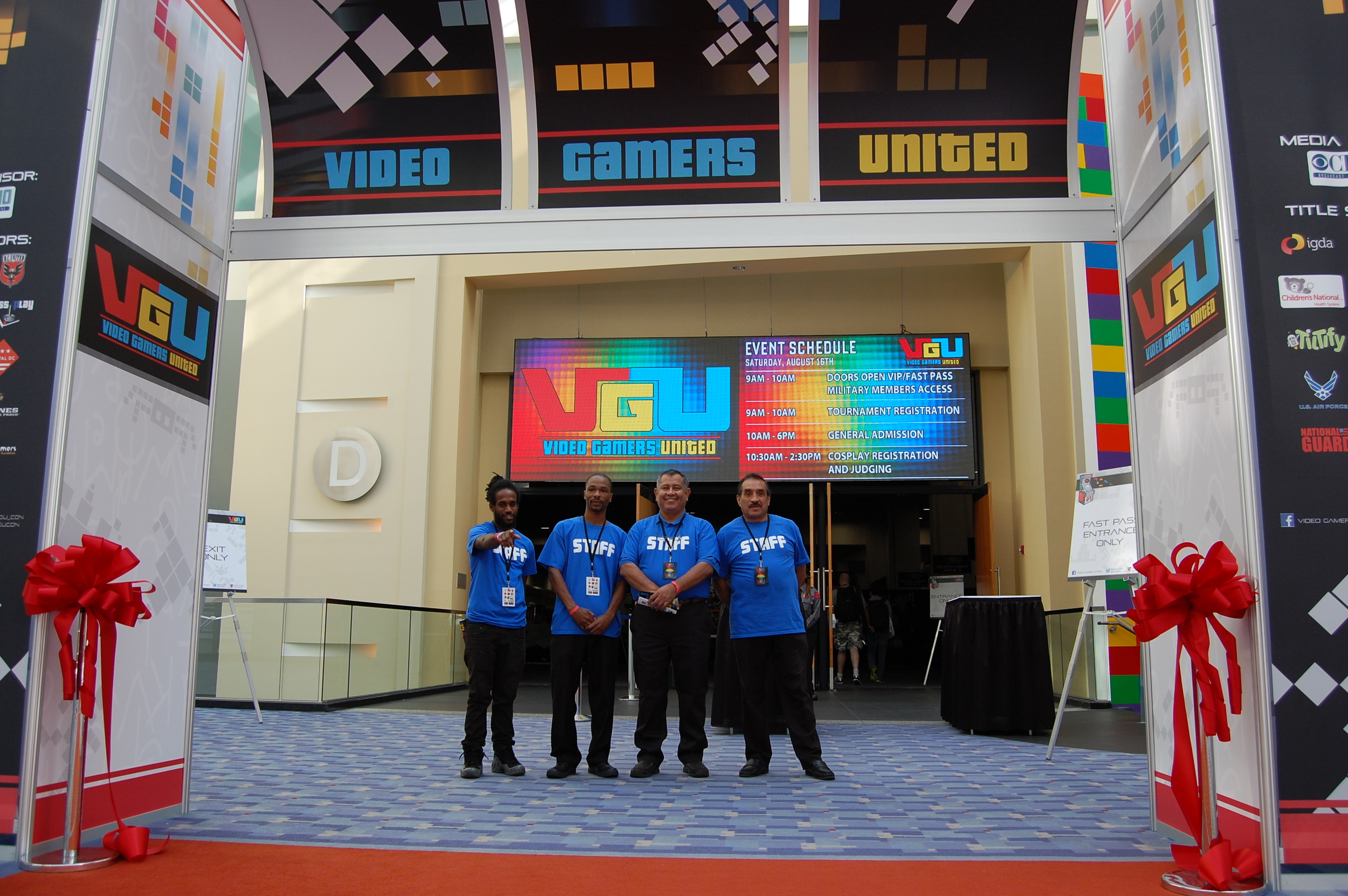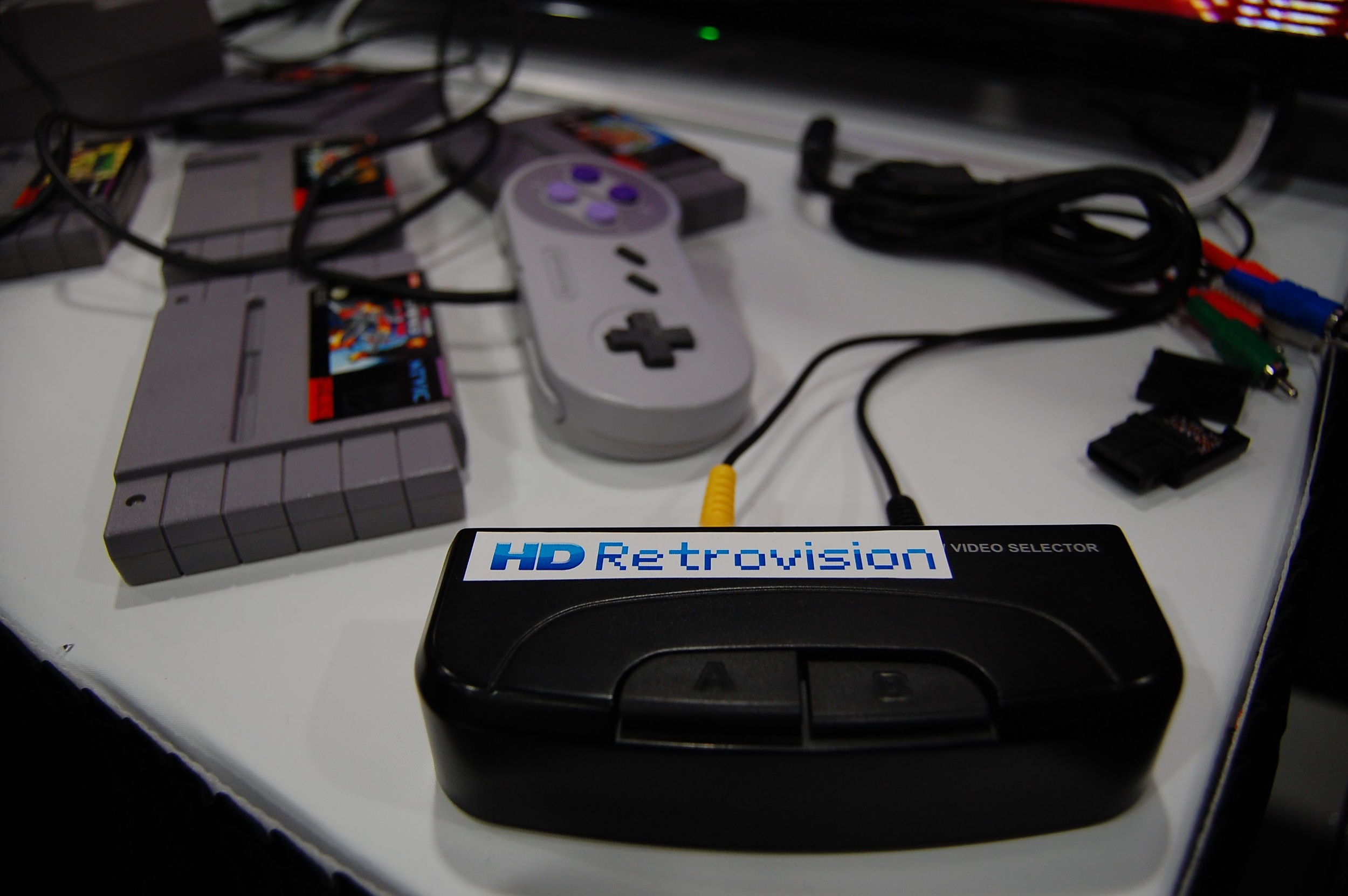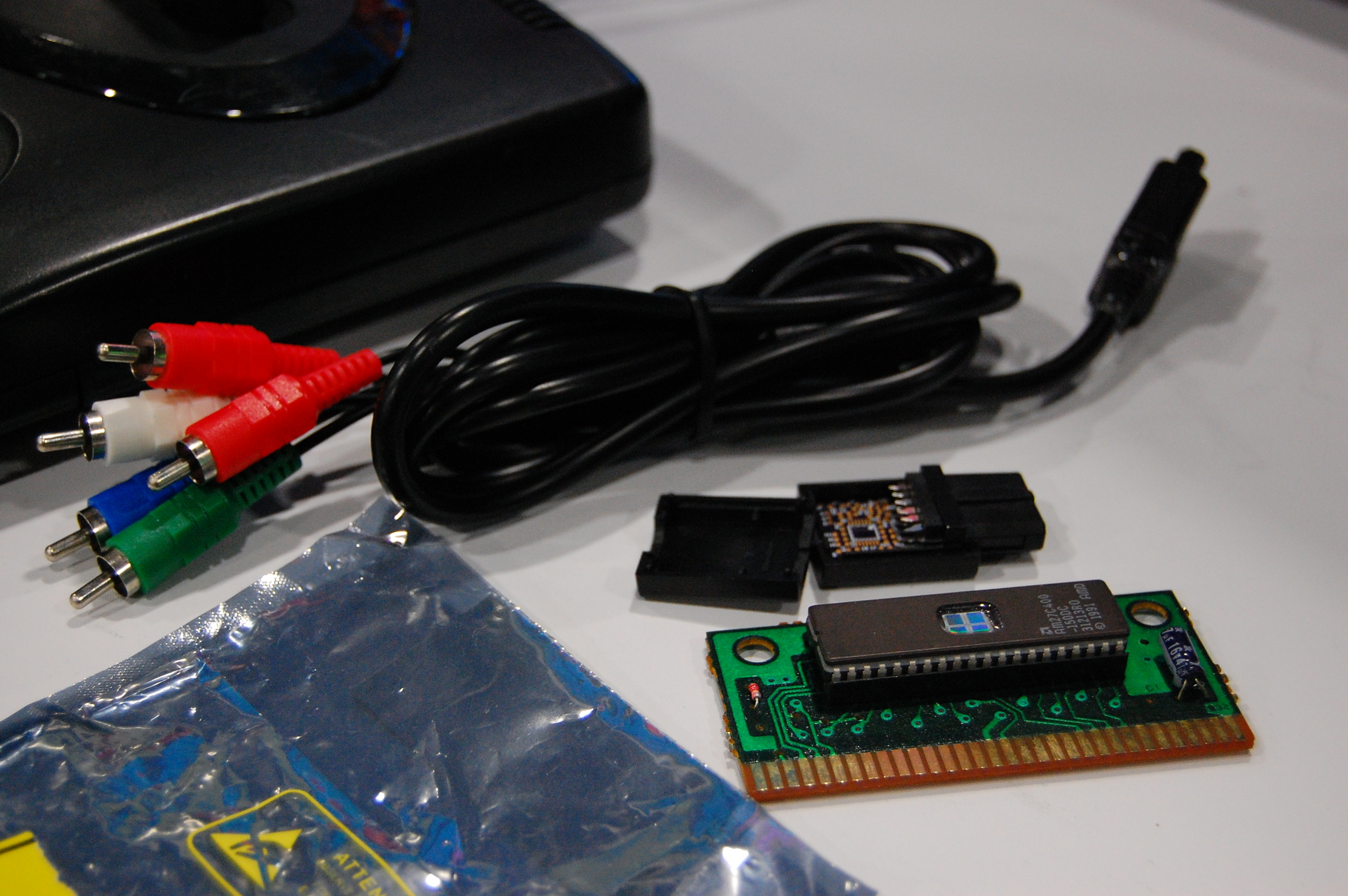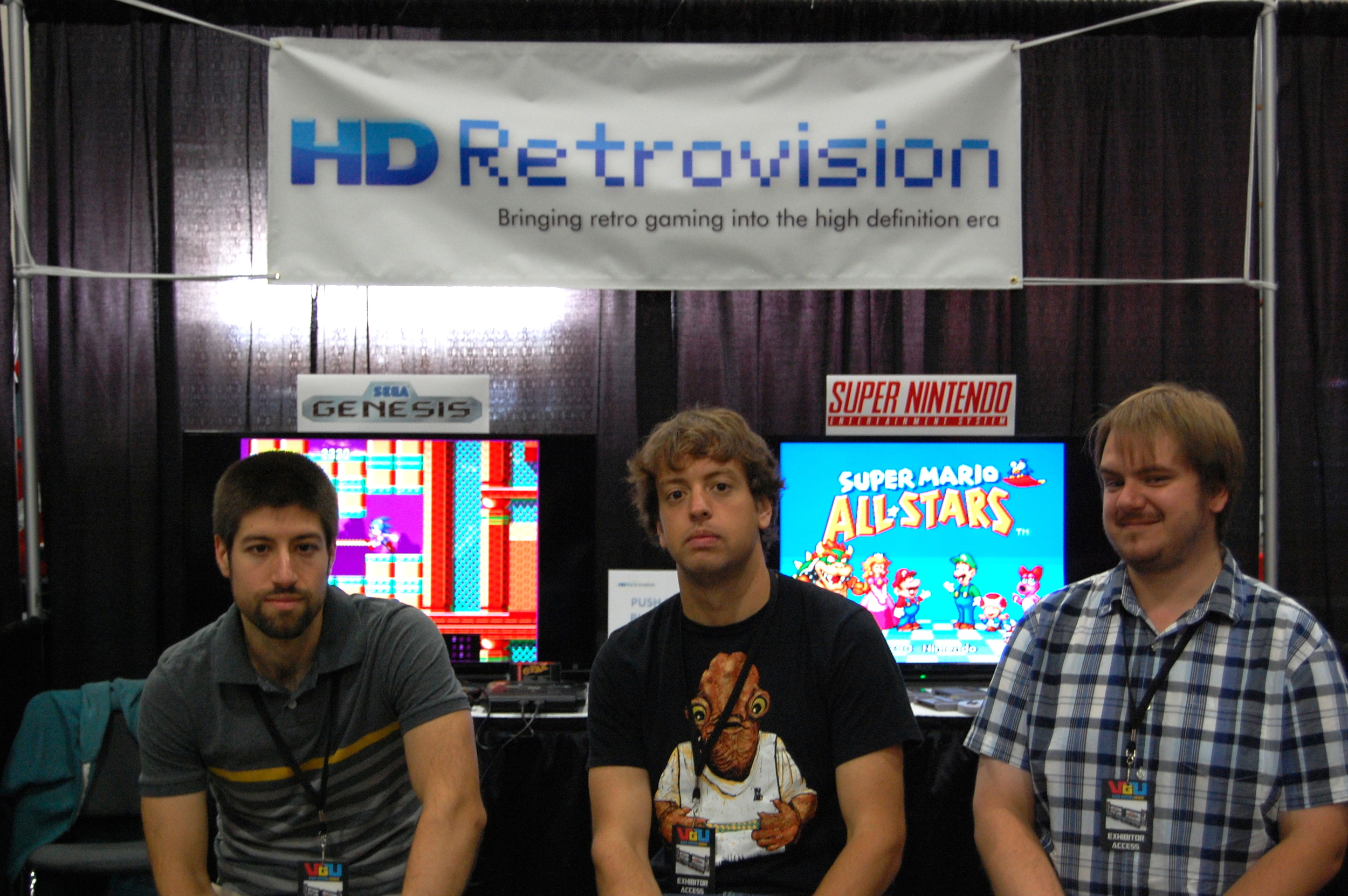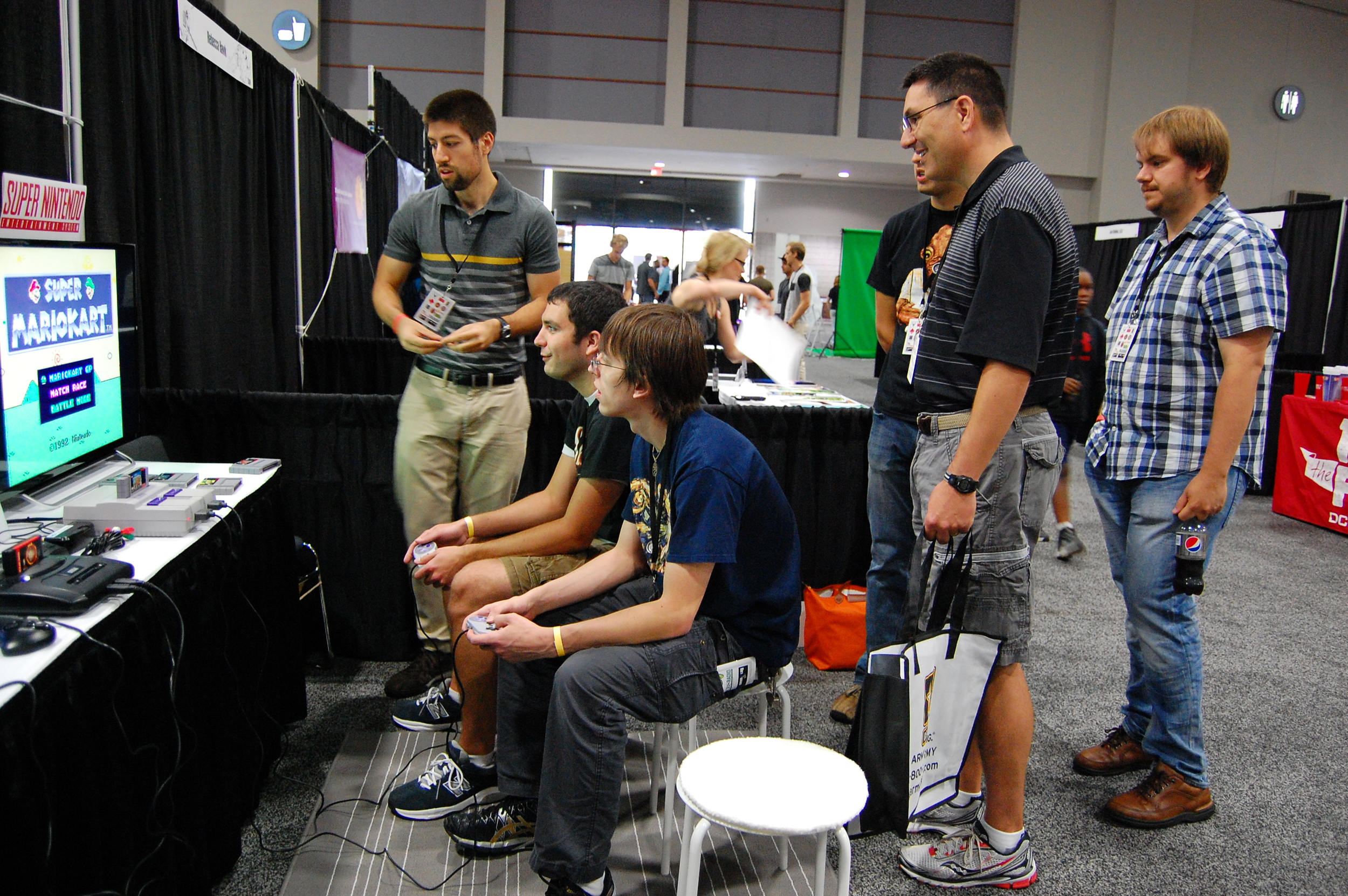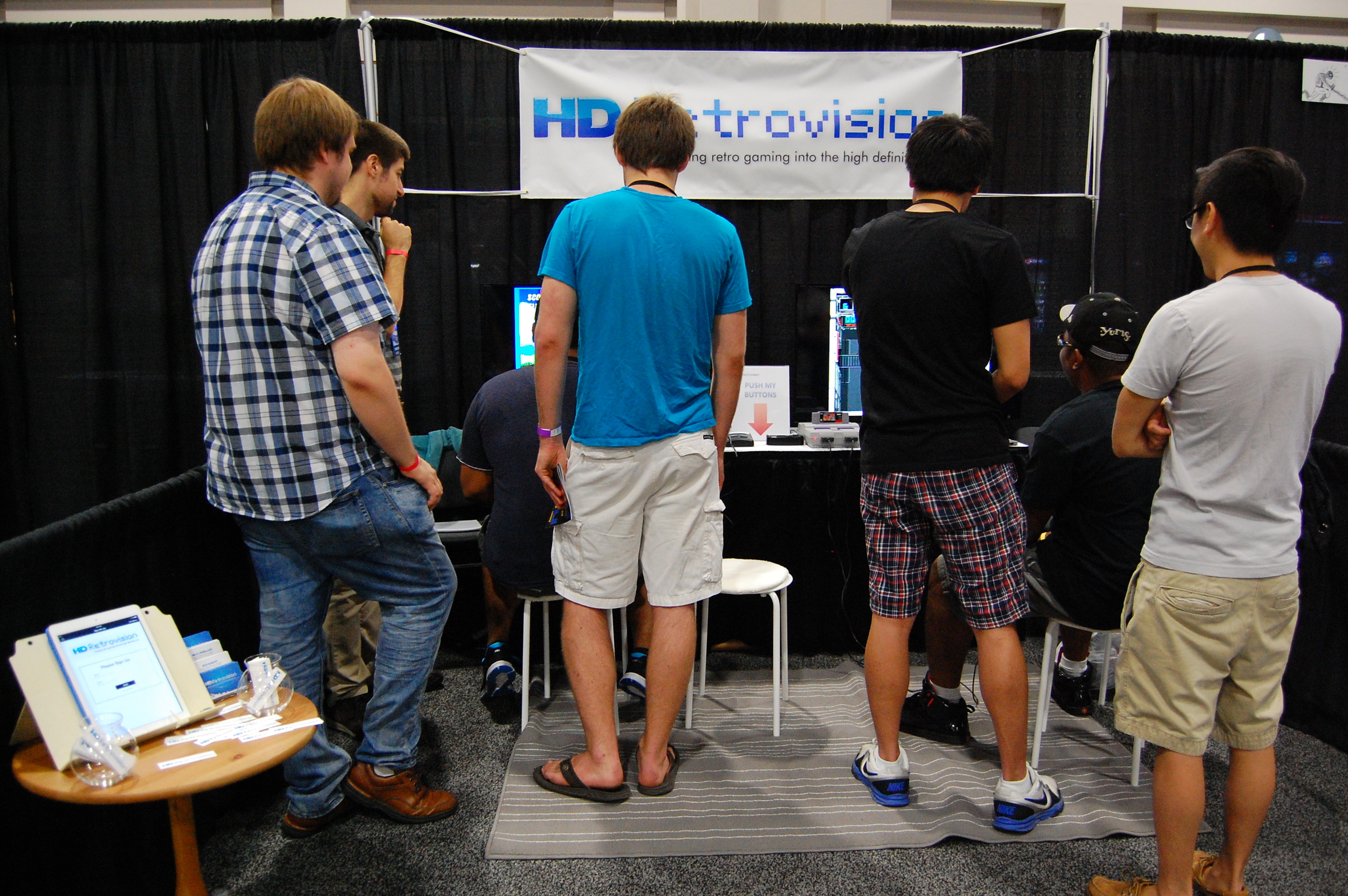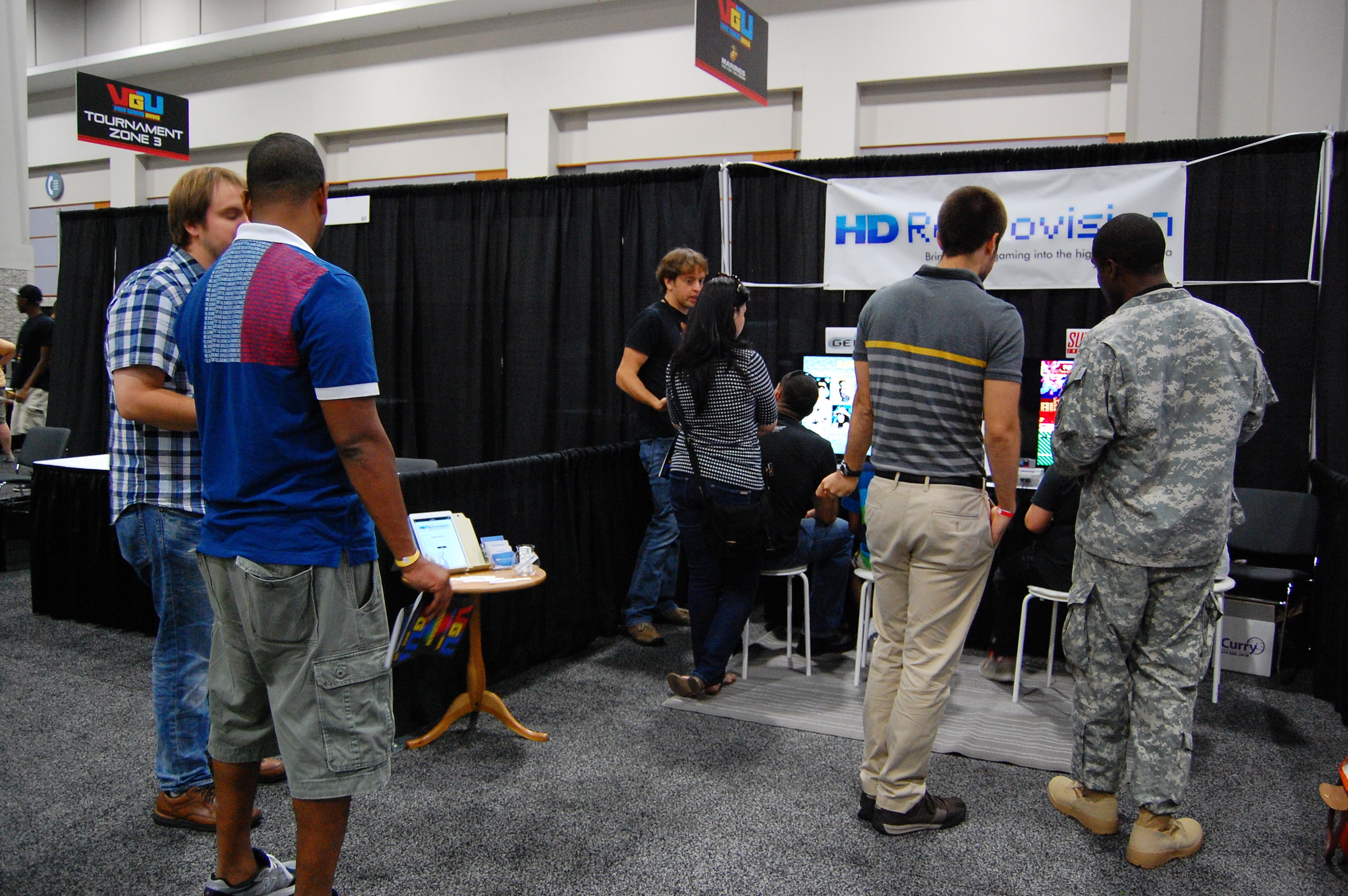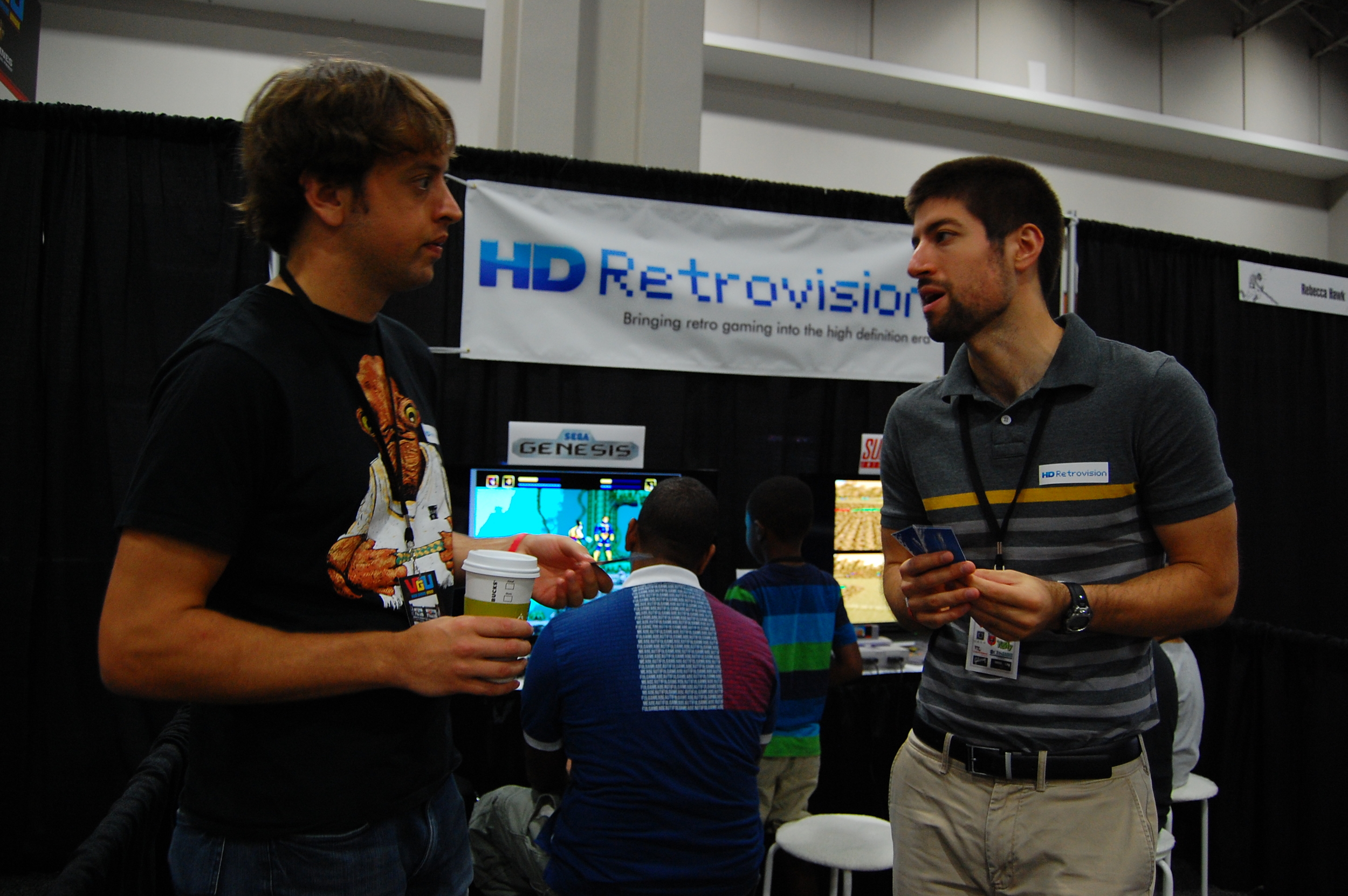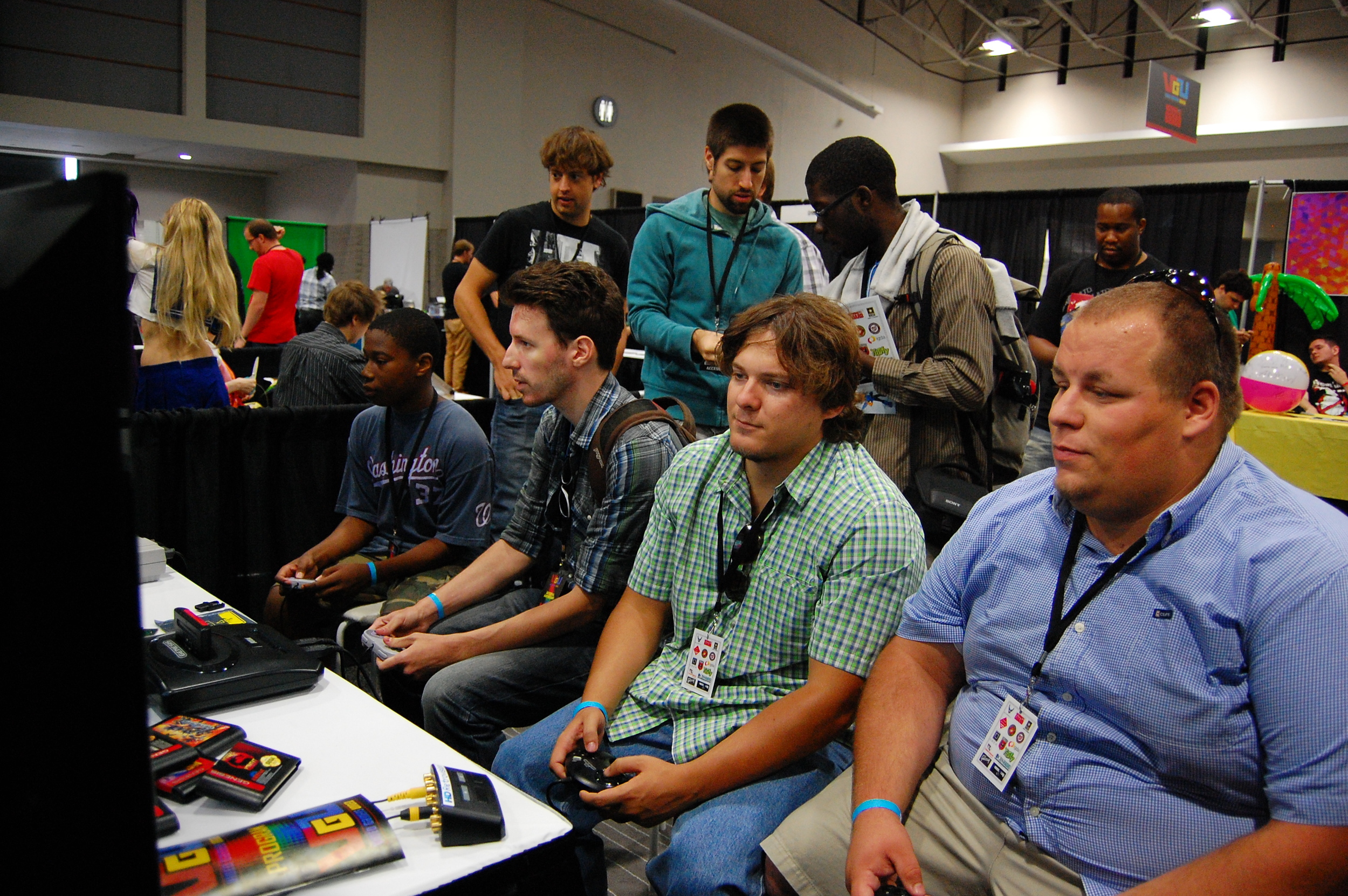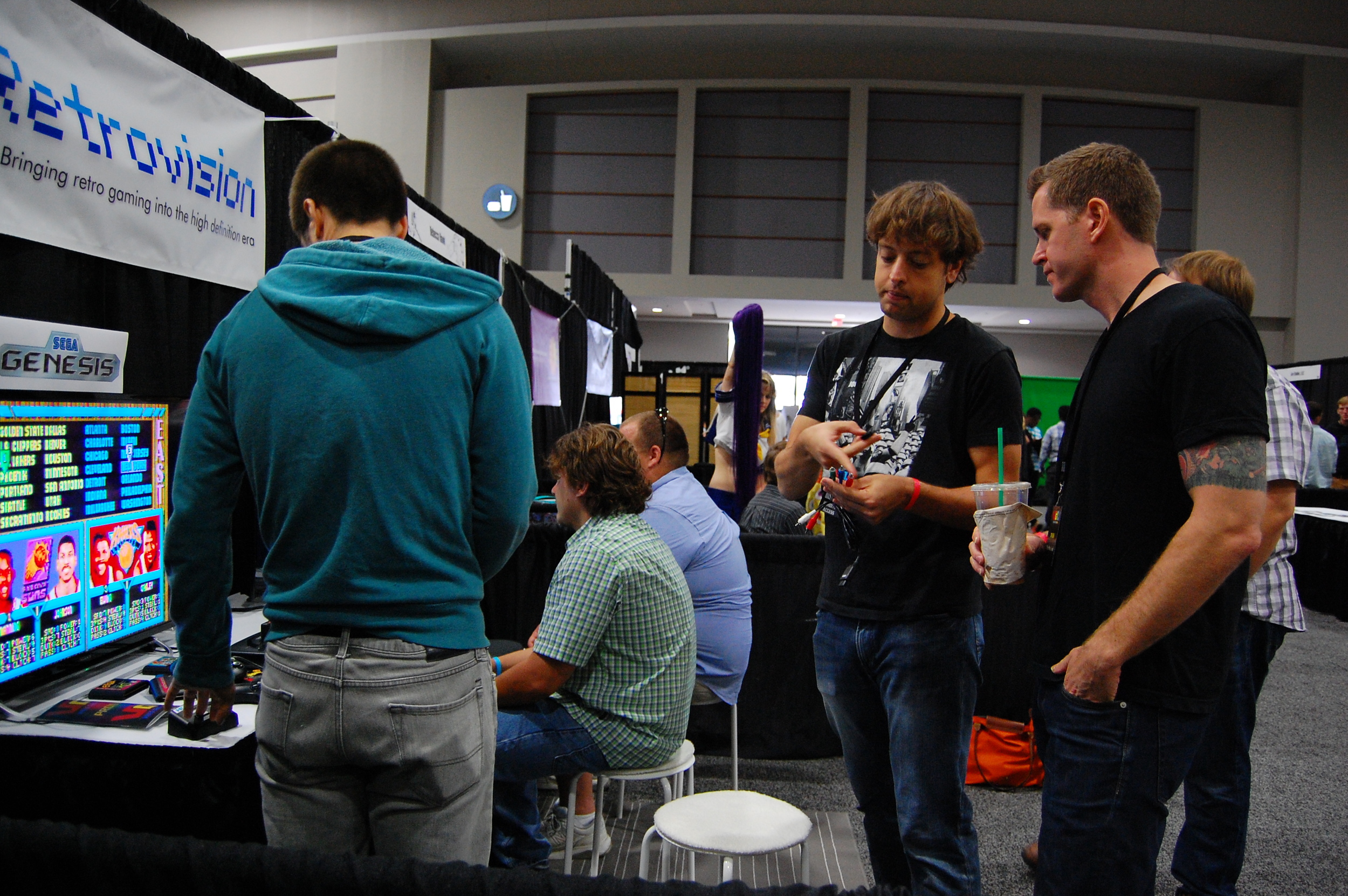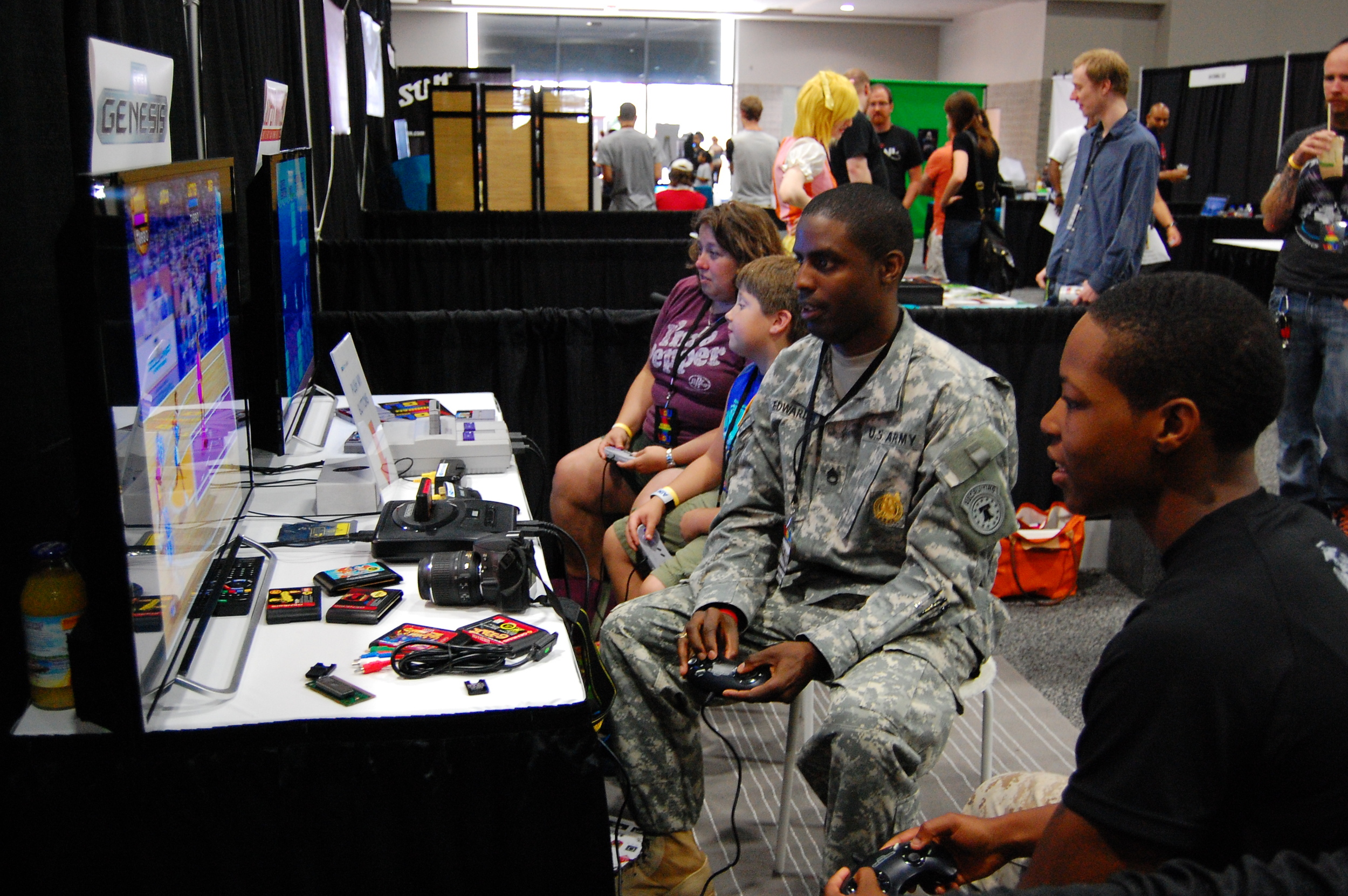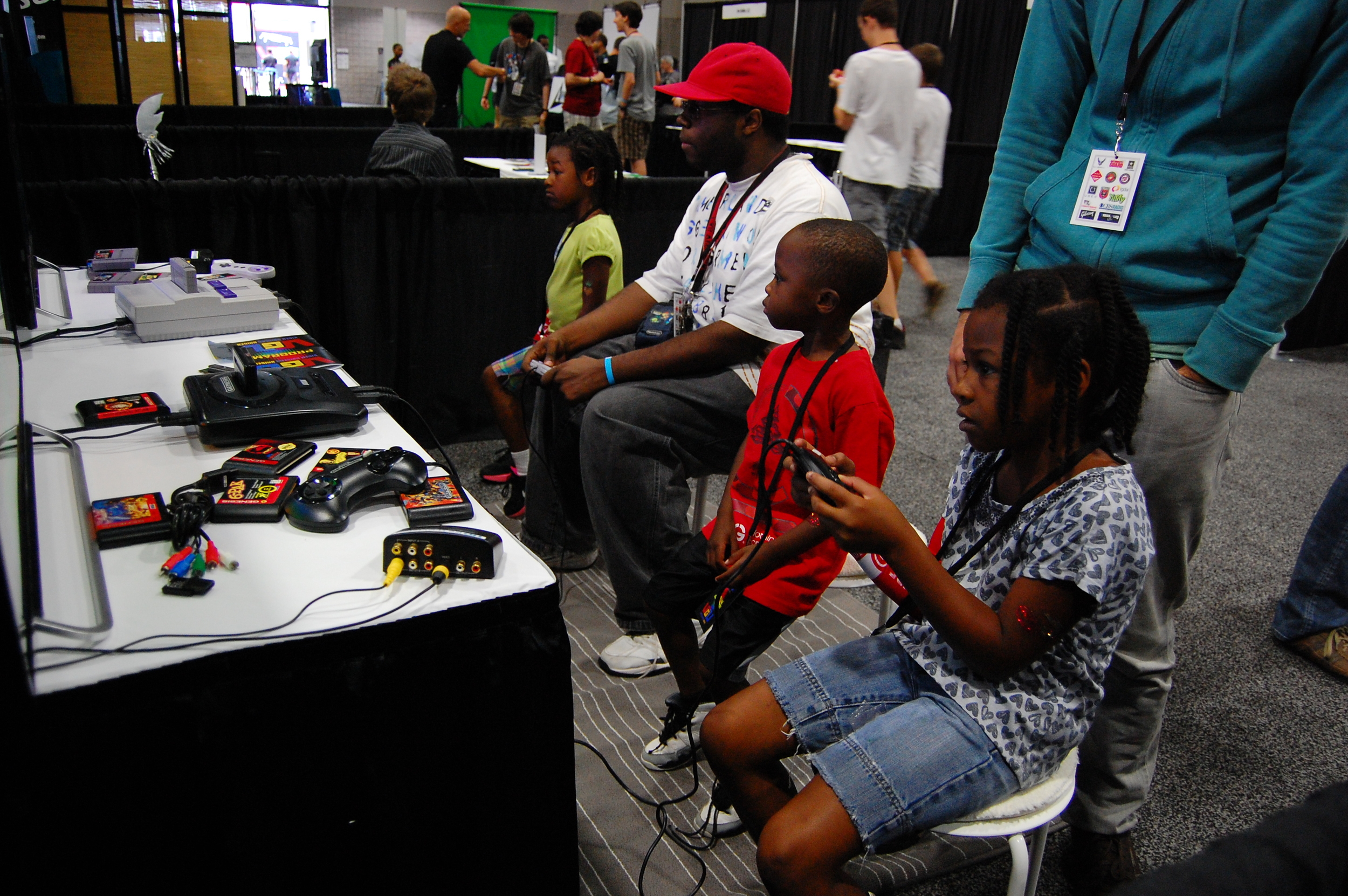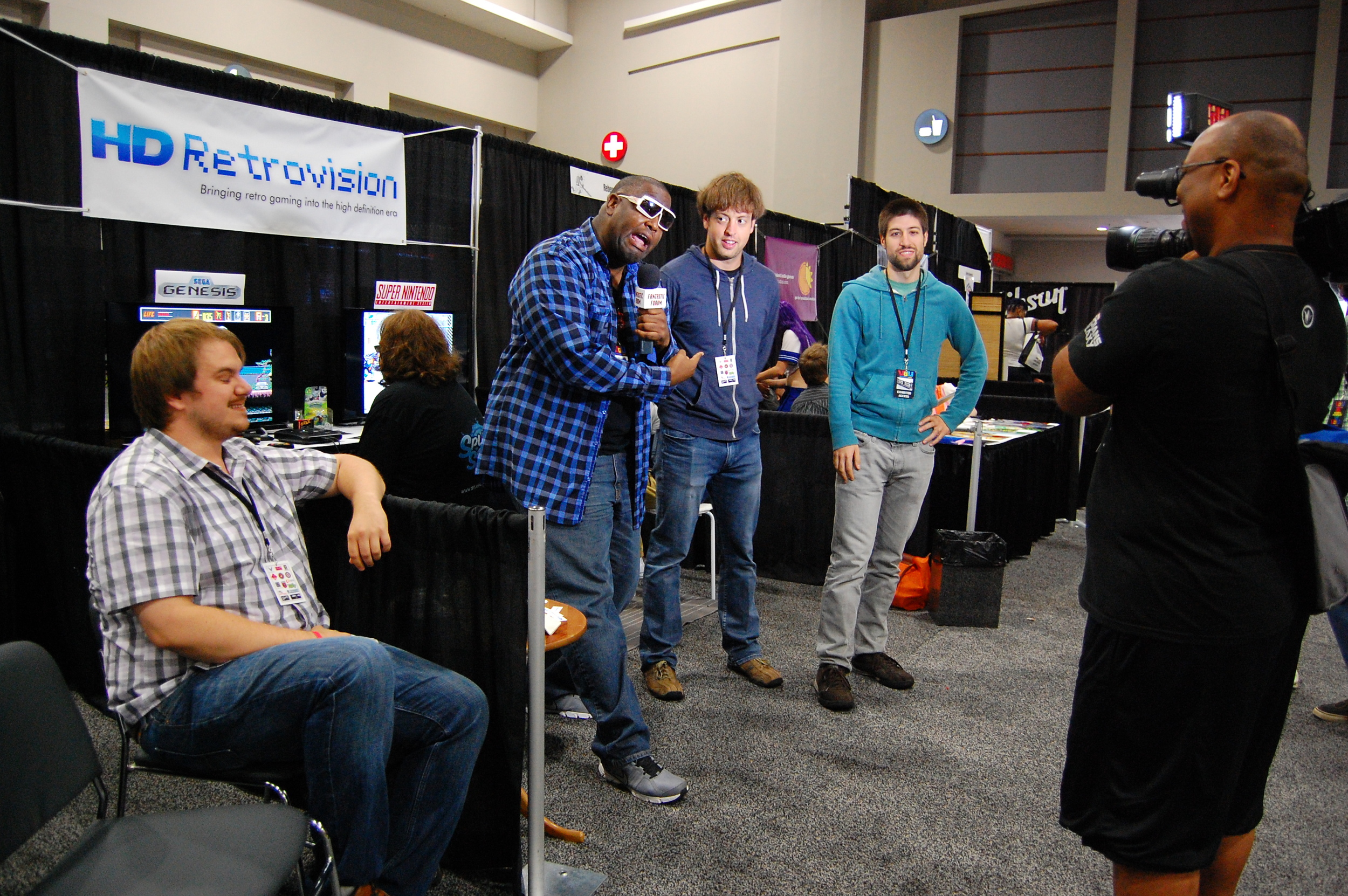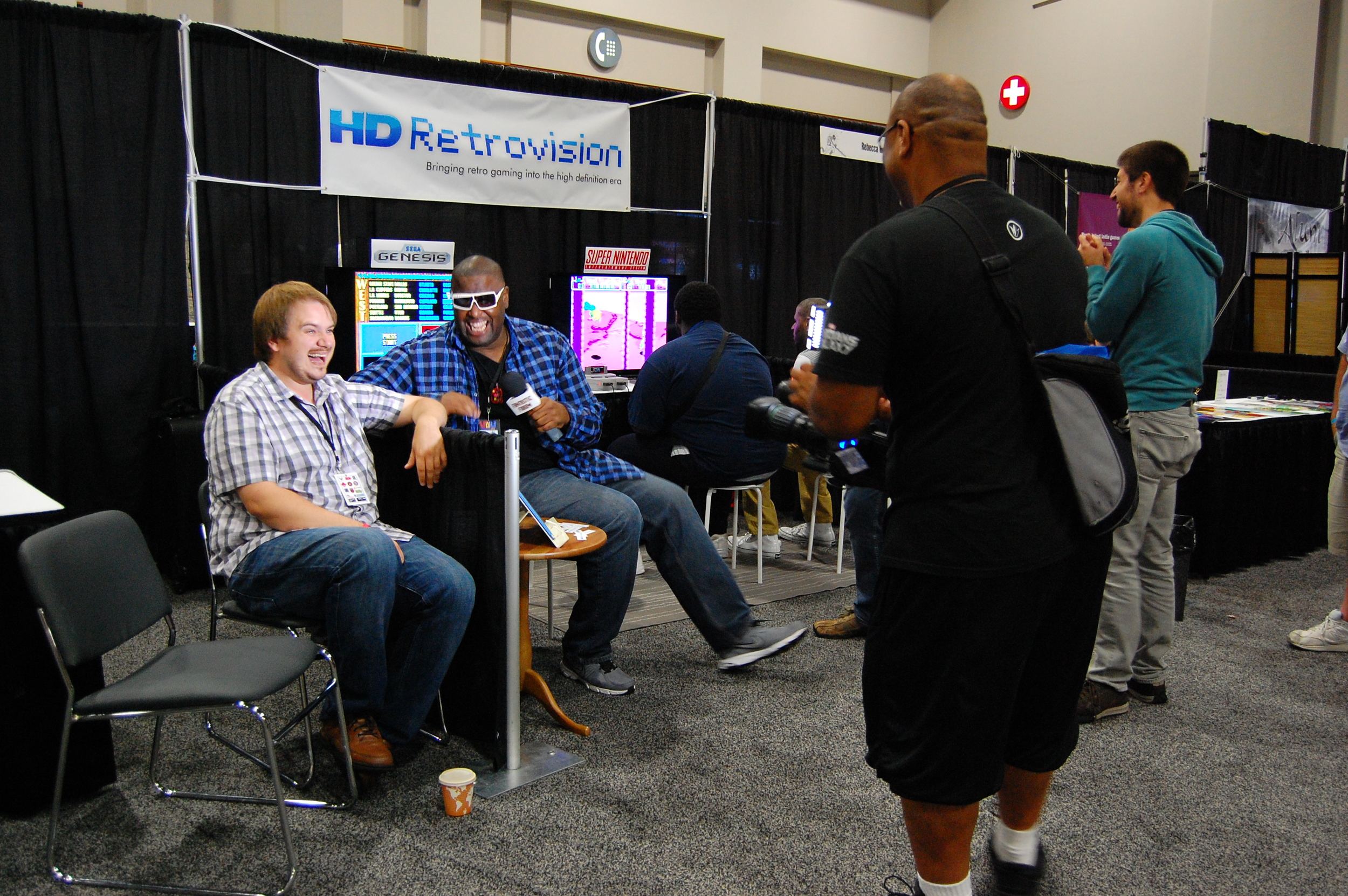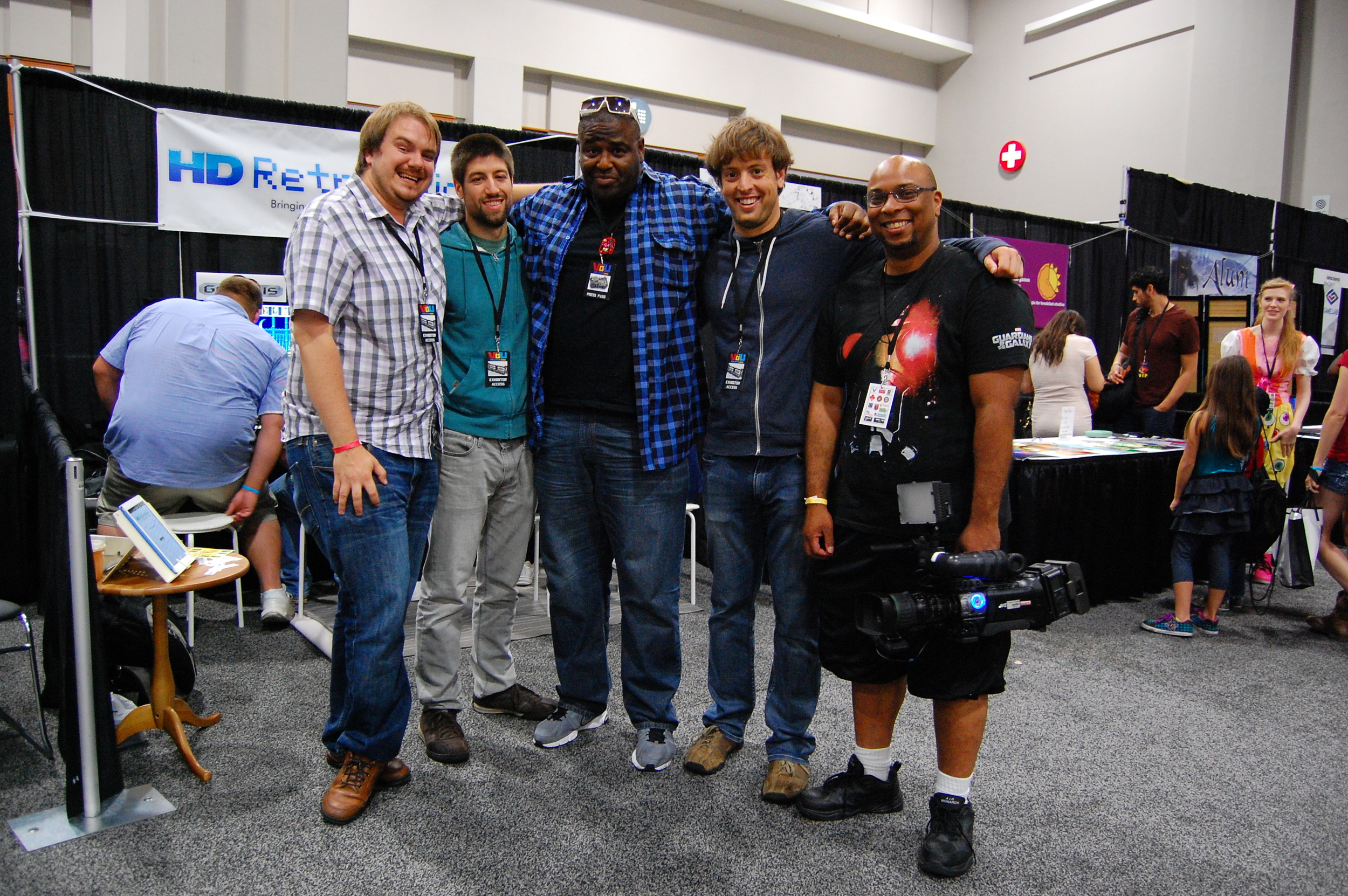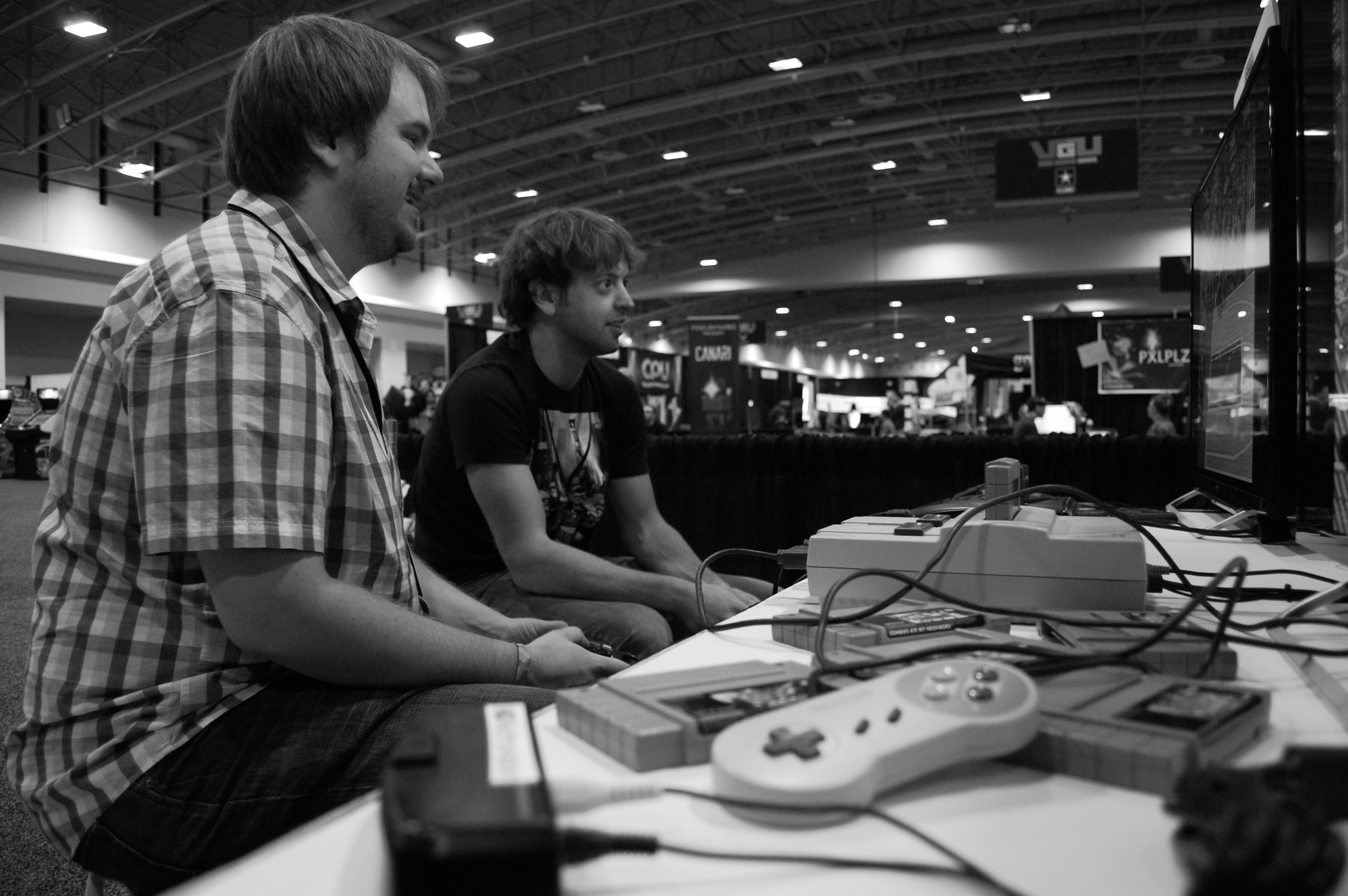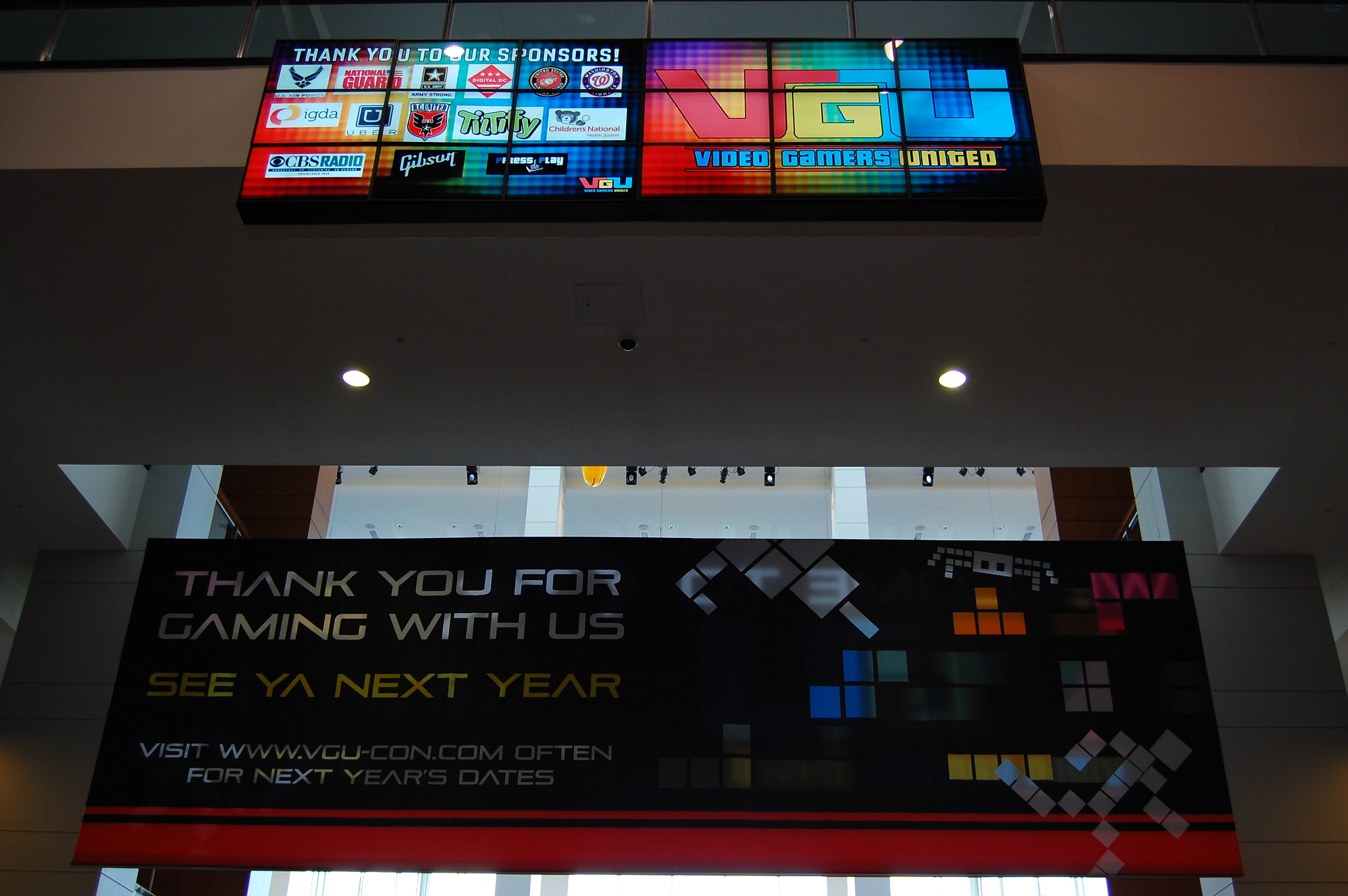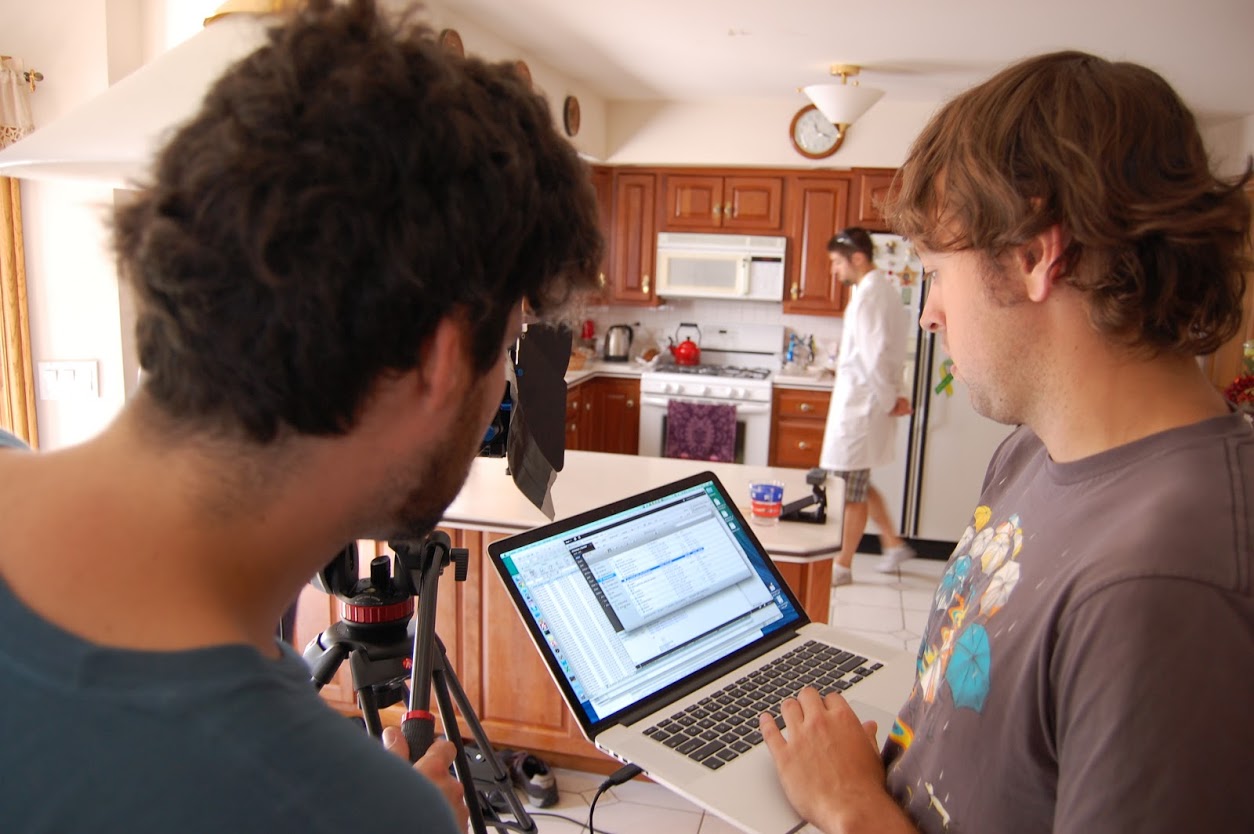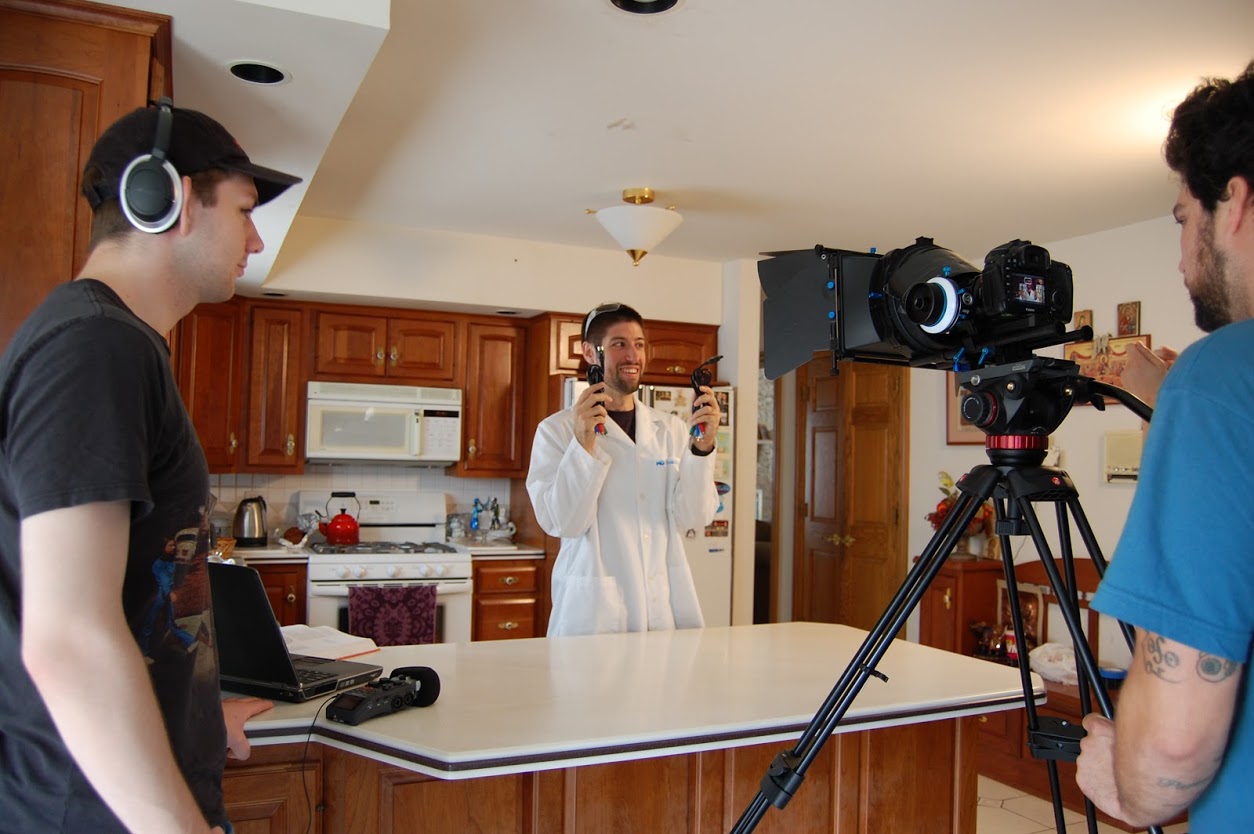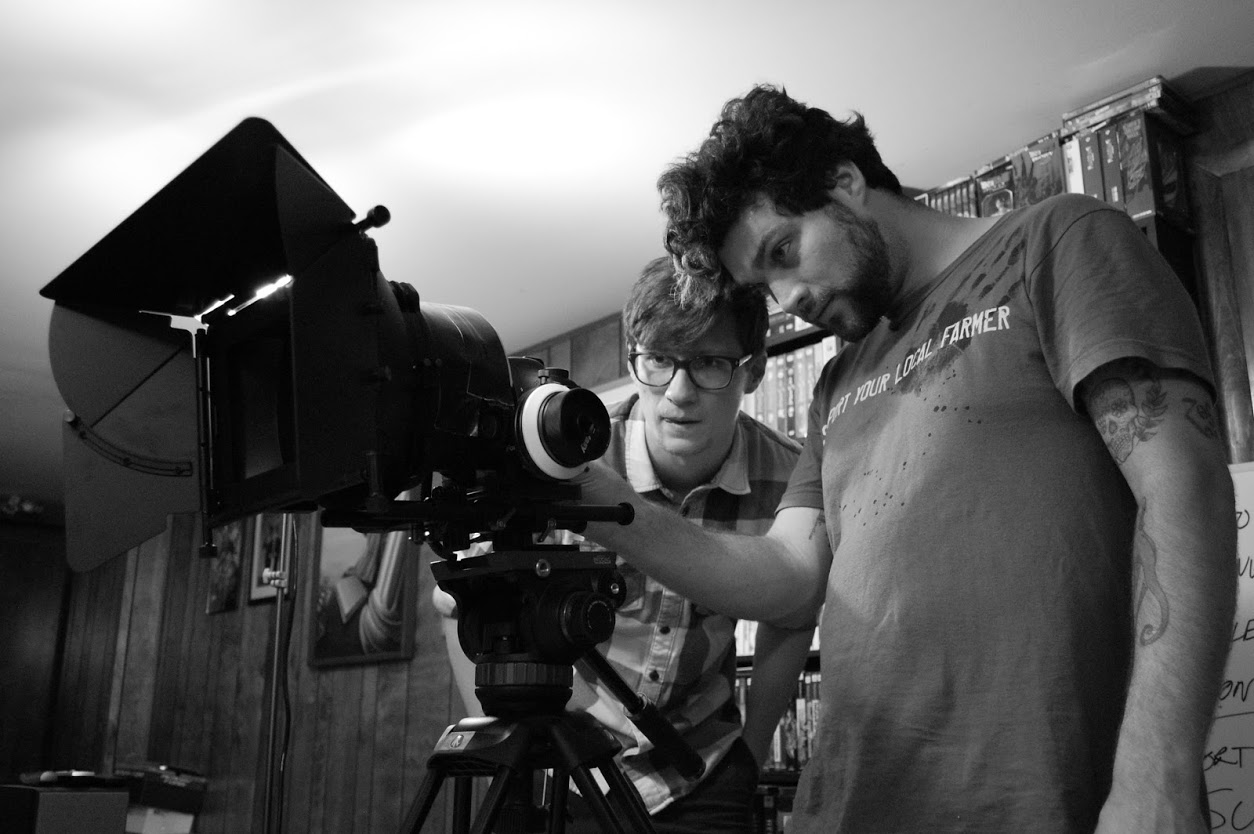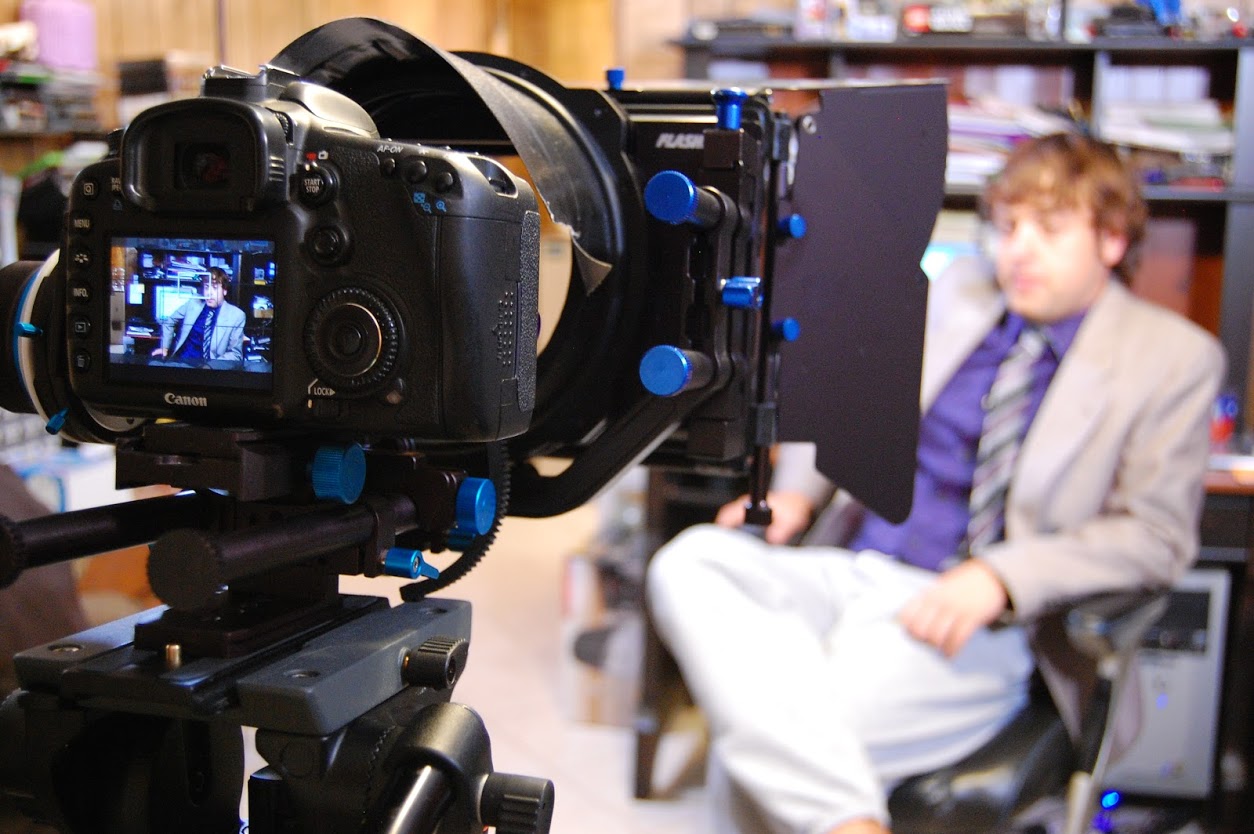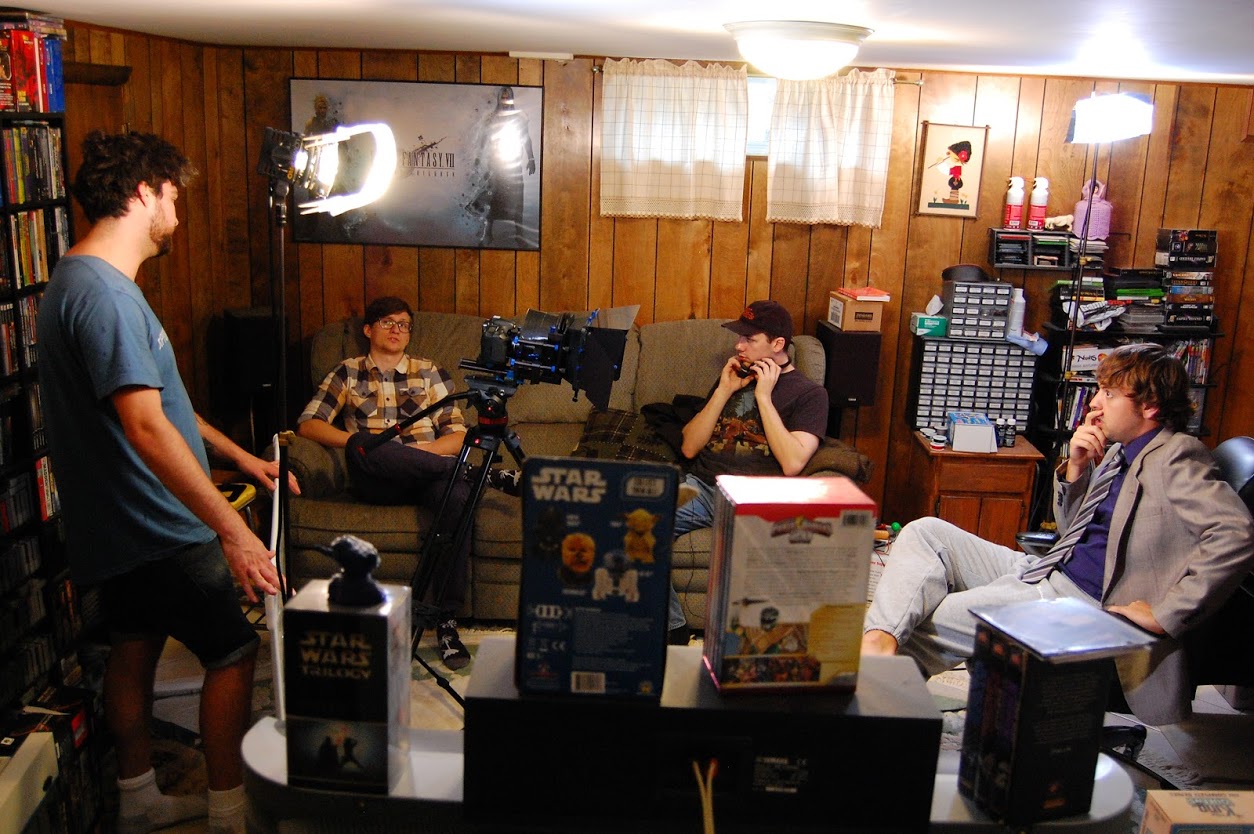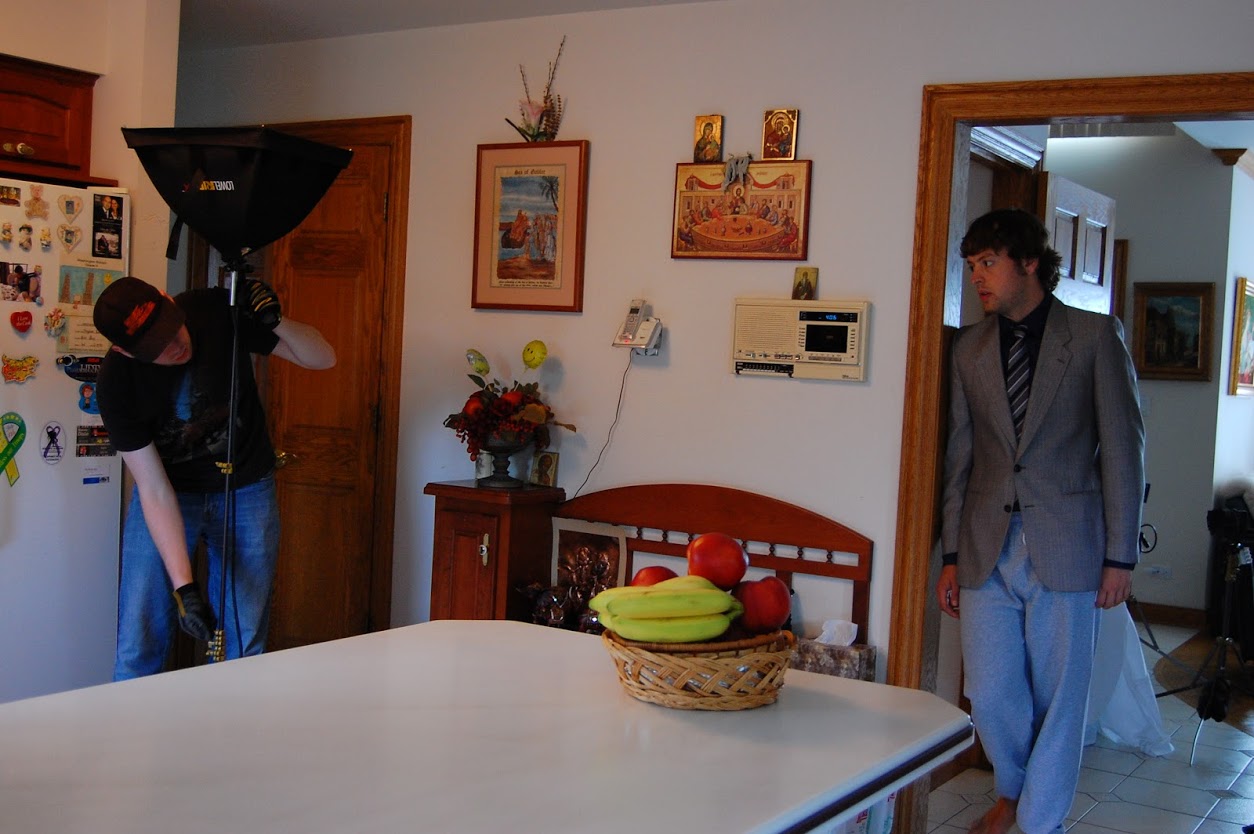Following up on some of the links to our webpage from various message boards and forums, we have noticed that some people have made comments that they were unable to tell the difference between our cable and composite video. That falls contrary to what we have heard from people who have seen live demos of the cable, both at VGU Con and from those with engineering prototypes. As such, we would like to make sure the difference that our cables make is accurately conveyed through PNG images and Youtube videos.
People are able to clearly see the difference in quality for the Sega Genesis cables. This is due to the fact that the hardware converting the video into a composite signal on the Genesis is worse than on the SNES, so our cables make that much bigger of an improvement. Here's a zoom-in on NBA Jam for comparison.
The difference in quality here is obvious. Words are legible, color striping disappears and player likenesses and the logo are sharper when using the HD Retrovision component video cables. We see similar gains in visual quality in Streets of Rage below.
Now, if one goes from looking at Sega Genesis comparisons to SNES comparisons, it certainly might appear at first glance that the differences between composite and component video have disappeared. Or if one watches the SNES comparison video on a smaller screen, or without expanding the player to full screen and making sure HD mode is on, it again is definitely possible to miss some of the differences. And we're not going to tell you "Trust us, it's there." Instead, let's have a look at some zoom-ins from the SNES.
To begin with, here is a comparison from Mario Kart, where the differences are most obvious in the borders between mountain and sky, the text at the bottom, and on the Luigi character. The composite video contains minor color striping, as well as jagged and blurrier edges. Not only does this look bad in still images, but the jagged edges tend not to move consistently from frame to frame, which causes an unpleasant wobbling/strobing effect.
Here's another cut from Mario Kart, this time at the character select screen that really shows the jagged edge problem caused by using composite video.
To show we're not picking on poor old Mario Kart, here's a snippit from Super Mario World.
Once again, the jagged edges are readily apparent, which in the case of the numbers causes them to be rendered with the wrong color more often than not. As with the Sega Genesis, the video quality resulting from our component video cables is superior to composite video. And remember, when these games are played on large HDTVs, these differences will be much more noticeable than on most computer monitors.
We hope this post helps out those who were having trouble noticing the difference in the comparison videos or images on the other pages of the website. As an image processing engineer by training who has published papers with comparisons like this, I really should have done something like this sooner. Here at HD Retrovision, we're committed to making really cool products that work well and do what we claim that they do. We're also passionate about being open and honest with our work so that people can make informed decisions before they buy. So please, don't hesitate to send us any questions you might have!
- Nick
















